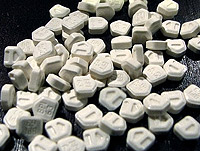What is Benzodiazepine?
Benzodiazepine is essentially a tranquilizer. The drug works by affecting the chemicals in the brain that nerves release for communication. It is mainly used to treat anxiety. It works on the basis that the activity of the nerves causes anxiety, and if the activity is suppressed, it will help reduce anxiety.
Apart from anxiety, Benzodiazepine is used to treat panic, seizures and insomnia. In some cases the drug is used for anesthesia, as a sedative before surgeries, relaxation of muscles, withdrawal treatment from alcohol and even depression.
There are two types of Benzodiazepine drugs – short-acting and long-acting Benzodiazepine. Xanax, Ativan and Halcion are short-acting Benzodiazepine. Valium, Klonopin, Librium are long-acting Benzodiazepine.
Side Effects
Some of the common side effects that Benzodiazepine users feel are dizziness, weakness, depression, disturbance in sleep, headaches, confusion and memory impairment.
Benzodiazepine addiction
Benzodiazepine can cause physical dependence and stopping intake of the drug can cause severe withdrawal symptoms. Since it is an addictive drug, Benzodiazepine in the human body builds tolerance towards the drug.
Symptoms of Withdrawal
Withdrawal symptoms of Benzodiazepine are often physically and emotionally painful. Sometimes it can also be life threatening. Users who have been on the drug for a long time, and those who intake the drug in high doses, are prone to more severe withdrawal symptoms.
Some of the symptoms of Benzodiazepine withdrawal are sweating, panic attacks, nausea, dizziness, headaches, insomnia, hallucinations, seizures, and irritability. For short-acting Benzodiazepines like Xanax, Ativan and Halcoin, the withdrawal signs start appearing six to eight hours after stopping the drugs. For long-acting Benzodiazepines like Valium, Klonopin and Librium, the withdrawal symptoms start appearing 24 or 48 hours after stopping consumption of the drug.
Benzodiazepine Withdrawal
Benzodiazepine is an addictive drug. Users build up tolerance and higher quantities of the drug will be required to achieve the same effect. When the intake of the drug is stopped, the user starts to experience withdrawal symptoms. The withdrawal symptoms affect both prescription users and the drug abusers in the same way. That is why doctors refuse to prescribe Benzodiazepine over long periods of time.
Withdrawal from Benzodiazepine follows a timeline, however this is not strictly how the withdrawal process takes place. Six to eight hours after starting the detox process, the users of short-acting Benzodiazepine start experiencing anxiety and insomnia. Within the next four days, the users suffer from rebound anxiety. Insomnia also persists, along with other signs like increased heart beat, increased breathing rate, sweating, nausea etc. For the users of long-acting Benzodiazepine, the first signs of withdrawal symptoms start appearing. 10 to 14 days after stopping the drug, the withdrawal symptoms peak and then slowly fade away.
Rebound Effect
Benzodiazepine is used to treat anxiety and insomnia. After stopping the intake of the drug, users begin to experience a rampant increase in anxiety and insomnia. Benzodiazepine numbs the feeling of anxiety, therefore having been unaccustomed to feeling anxiety, the rebound anxiety comes back with greater force. The same thing happens in the case of insomnia.
Benzodiazepine Withdrawal Treatment
Benzodiazepine withdrawal treatment starts with removing the drug from the user’s body. The process is called detoxing. Unsupervised withdrawal treatment for Benzodiazepine can prove fatal to the user as there are withdrawal symptoms like seizures or suicidal thoughts that could potentially cause harm to the user. Detox with medical supervision can help reduce the discomfort that withdrawal treatments can cause.
Treatment for drug abuse happens in two ways: inpatient and outpatient treatment. Inpatient treatment requires the patient to stay at the rehab facility for the length of the treatment. This warrants intensive treatment for the problem. Outpatient treatment requires the patient to check in with the doctors every day of the week, except for weekends and holidays. In the inpatient treatment chances of relapsing are very low due to lack of access to drugs within the facility. Further the distractions of day-to-day life are lesser in the facility. 24/7 care is provided in the inpatient treatment, which could help long term users. Before choosing the kind of treatment, the history of the user needs to be taken into account. For a long term user who has suffered from multiple instances of relapses, it is best to choose the inpatient treatment. A short term user less vulnerable to serious withdrawal symptoms can opt for the outpatient treatment.




